Lecture 4 - Short Term Memory
1/62
There's no tags or description
Looks like no tags are added yet.
Name | Mastery | Learn | Test | Matching | Spaced |
|---|
No study sessions yet.
63 Terms
What are memory researchers interested in?
The types of things our memory can hold (ie. how is info coded/held and stored)
The limiting factors of memory (capacity and duration)
The process that allows information to enter and exit memory (ie. how we encode, store and retrieve info)
Define encode.
The process of putting things into our memory.
Define code.
The memories.
Like attention, is memory a unitary system? Why?
No.
Because we have short-term storage memory and long-term memory storage, indicating the separate components of memory.
Explain the Atkinson-Shiffrin Multi-Store (modal) Model
Sensory Input
you receive sensory input
Sensory Memory
sensory memory store is where memory is held for the shortest amount of time
unattended information is lost
Short-term Memory
short-term memory store where memory is held for medium time because attention is required for information to get to this stage
unrehearsed information is lost
Long-term Memory
long-term memory store holds memory for the longest time because encoding has occurred in order for information to get to this stage
some information may be lost over time

Define sensory memory.
A limited capacity store that holds basic sensory information for a very limited amount of time.
What are the different stores for each of our senses?
Iconic memory (visual sensory memory)
Echoic memory (audio-sensory memory)
Tactile memory (touch-sensory memory)
What did Sperling want to know from his Sensory Store Investigation?
He wanted to know how much sensory memory we can encode in a single instance.
Had people asked about how much we can encode in a single instance before Sperling? If so, what was the answer?
Yes, people had asked about it! And they said the answer was about 4 items.
However, Sperling was not convinced so he conducted more of his own research.
What was Sperling’s first Sensory Store Investigation?
He put 12 letters on the screen for 1 second and then asked participants to remember as many letters as they could (whole report).
Define whole report.
When participants are asked to report all the things they see, not just some.
What did Sperling find? What were his conclusions?
He observed that participants were able to remember about 3-4 letters.
However, he still felt that this was not right and that we could actually remember more. He thought that maybe all of it was encoded but that by the time participants were asked about it the memory was gone.
What was Sperling’s second Sensory Store Investigation?
He put 12 letters on the screen for 1 second. Then, if participants heard a low note, it indicated to them that they had to report only the bottom row letters (partial report).
Define partial report.
When participants are only asked to report some things, not all.
What was Sperling’s findings in his second Sensory Store Investigation? What did he conclude?
He found that when cued to report only the bottom row, participants could remember about 3 items in the row.
From that, he concluded that the participants remembered 76% of the whole thing, equating to 9 letters.
Why did Sperling think participants remembered 9 letters out of 12?
Because he felt that in order to remember 3 items in the bottom row correctly, they had to have remembered more than just 4 letters because they didn’t know what row we were going to ask them from.
This shows how iconic memory (visual sensory memory) was able to hold 9 items of the 12 that the participants saw, but not all 9 were transferred to visual STM. This is because, attention has a 4 item capacity and so when attention went back to retrieve things from iconic memory—which lasts 1 second—the iconic memories were gone and attention was unable to retrieve another round of 4 items.
Therefore, Sperling found that iconic memory (visual sensory memory) has a capacity of 9 items.
What did Sperling’s second Sensory Store Investigation find in terms of the length people remember stuff?
we forget most of of our iconic memory within the first 200 miliseconds
accuracy of participants’ memory of the letters decreased as time increased
iconic memory was gone by 1 second
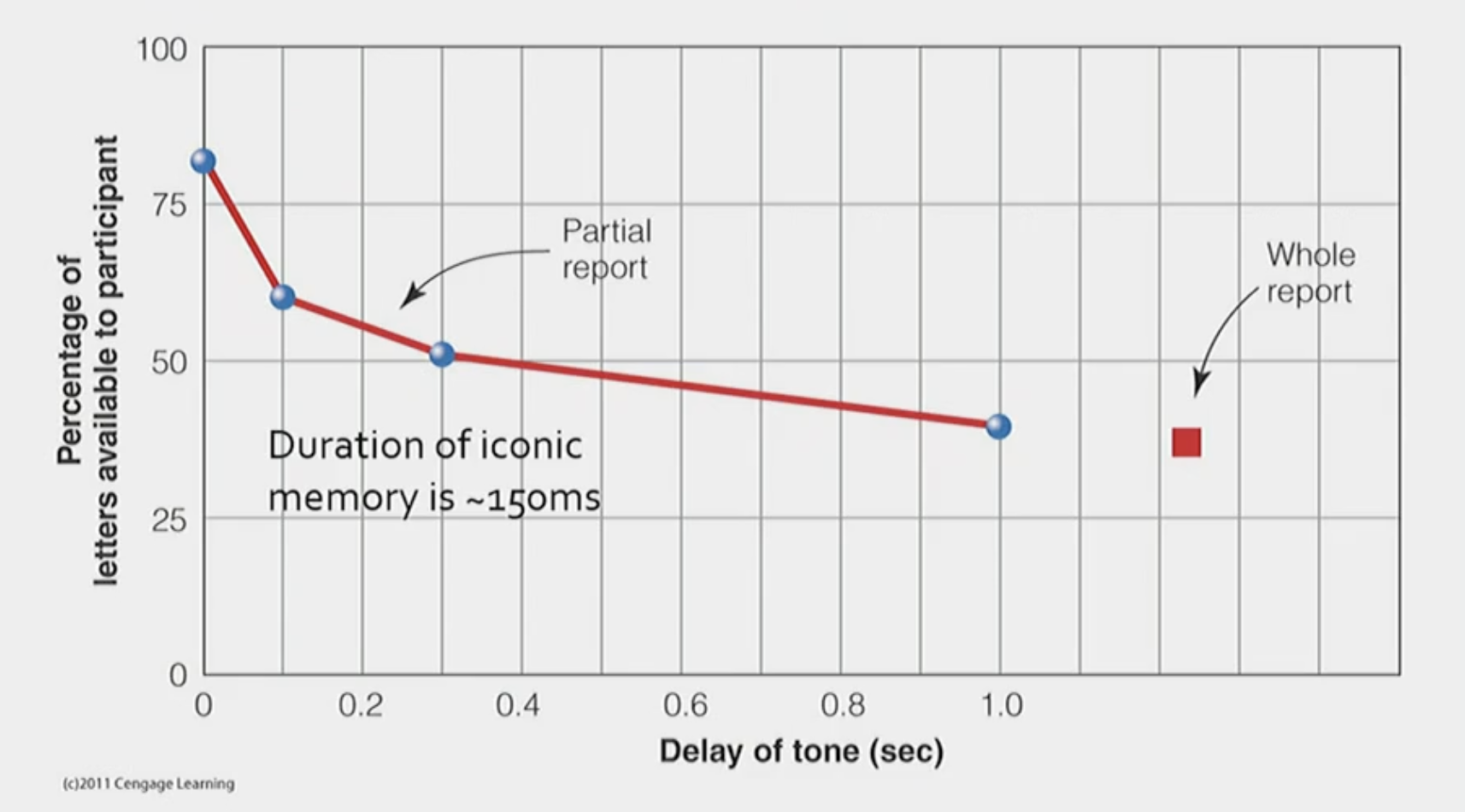
If iconic memory is gone by 1 second, how come we can still remember information past 1 second?
Because the iconic memory has been moved to short-term memory through the process of attention.
Our attention has a 4 item capacity and so 4 items can be moved from iconic memory into short-term memory. But when our attention goes back to retrieve more iconic memory and move it to short-term memory, it’s already gone.
What is the rough duration for echoic and tactile memory?
4-5 seconds.
What is an example of echoic memory lasting longer?
When you don’t really pay attention to someone the echoic memory is still there and so if you attend to the memory fast enough, the sensory input will still be there for you to process it.
This shows how it lasts longer because even though you weren’t paying attention at first, the memory lingered longer allowing you to process later.
Define short-term memory.
A limited capacity store that holds information for a relatively brief period.
What did the Brown-Peterson task show?
The more you rehearse the longer short-term memory lasts and the more it helps pass the information into long-term memory.
However, if you cannot rehearse the duration of short-term memory shortens.
How long does short-term memory last?
10-20 seconds.
What was in George Miller’s findings?
He proposed that we can store 7 (plus or minus 2) things in our verbal STM.
This is because, we have 5-9 slots in our verbal STM and in order to remember more in our STM, we’ll have to remove something from one of the slots.
To keep things in the slots we need a ‘rehearsal buffer,’ because if we don’t rehearse the memory will fade in 10-20 seconds and the slot will empty.
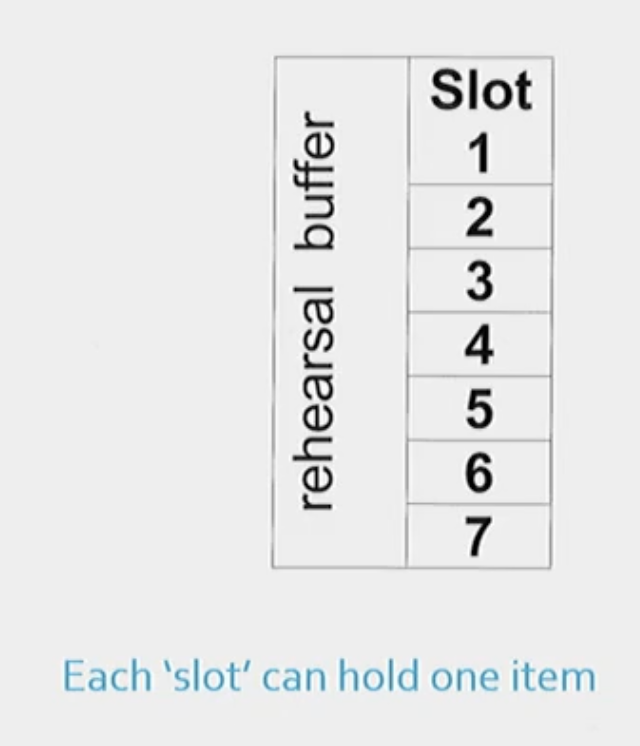
If attention has a 4 item capacity, how do we hold 7+-2 in STM?
If the information is presented very quickly we cannot process 7 items. However, things are usually present for enough time that we can process some of it and then go back and process some more.
What is considered an item that can go into the slot?
A meaningful chunk (which is something that is connected to long-term memory).
Hence, the new information + information from long-term memory combines and we can put it all into 1 slot.
Define digit span.
How many numbers someone can repeat back (how many numbers can they store in STM).
What language speakers have the highest digit span? Why?
English speakers.
This is because most digits (numbers 0-9) have 1 syllable. Whereas, in other languages, like arabic, digits tend to have more than 2 syllables.
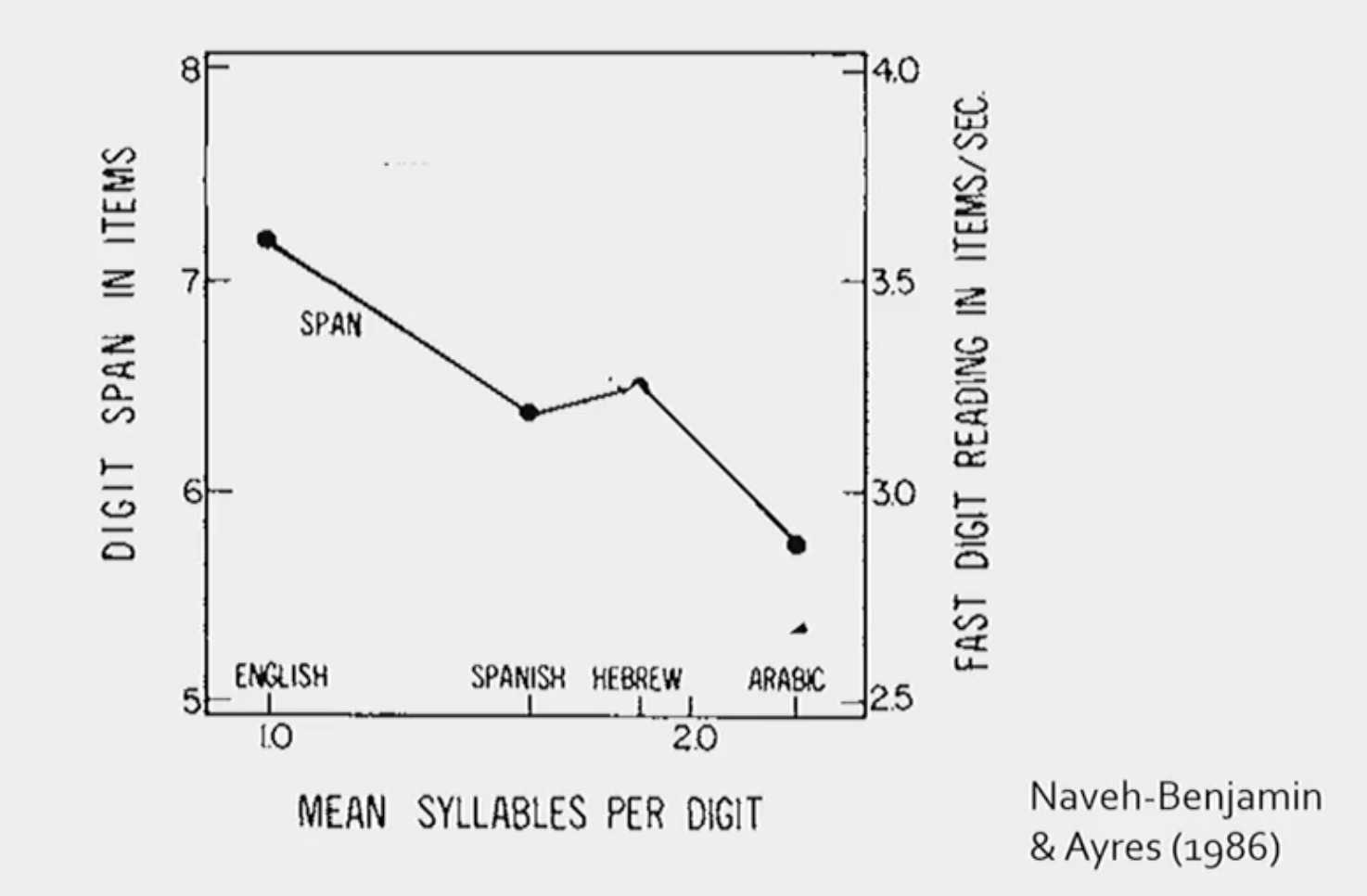
What’s the relationship between mean syllables per digit and digit span?
The fewer the syllables per digit, the higher the digit span.
What’s the relationship between reading speed and digit span?
The more digits someone can read in a second, the higher the digit span.

Define the phonological similarity effect.
When letters rhyme they are harder to remember, indicating that memory is stored in short-term memory acoustically (aka. verbally).
Is everything in STM coded verbally?
No.
Some things don’t have a concrete name and so they aren’t stored verbally in our minds. Verbal is the default, but visual STM can be used as well where we keep a picture of the thing in our head.
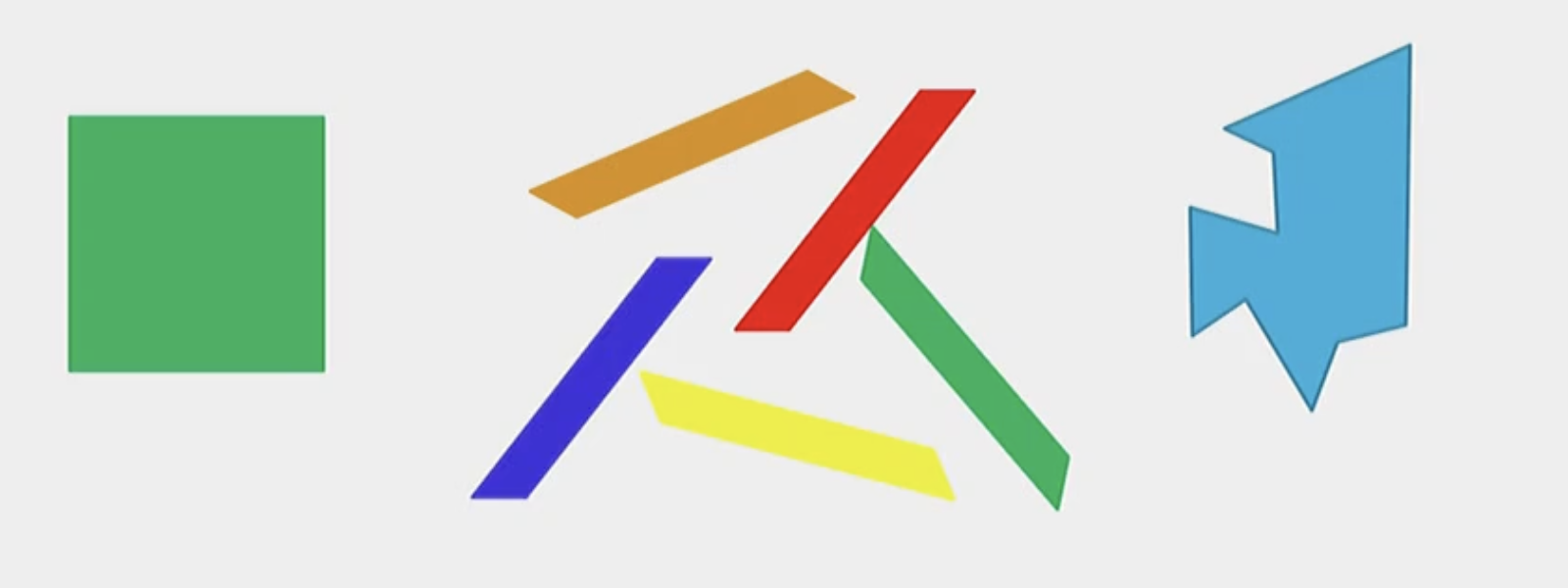
What’s the difference between verbal and visual STM?
Verbal capacity
7±2 items
Visual capacity
4 items
*Sperling said we can hold about 9 out of 12 items in iconic memory—this does not refer to capacity as that is just how much we can encode in an instance (so it only lasts 1 second). So, capacity for visual items are 4 items!
Who first investigated visual STM?
Luck and Vogel (1997)
What did Luck and Vogel’s experiment entail? What were their findings?
They used a change detection paradigm and told them to remember what they see. They showed participants a display, a blank screen and then a new visual display.
Now their task was to press a button to indicate if the display was the same or different.
There were different conditions where some change detection paradigms had more items than others.
What they found was that accuracy was very high up to 3 items, and still ok at 4 items. However, accuracy anything after 4 items really dropped.
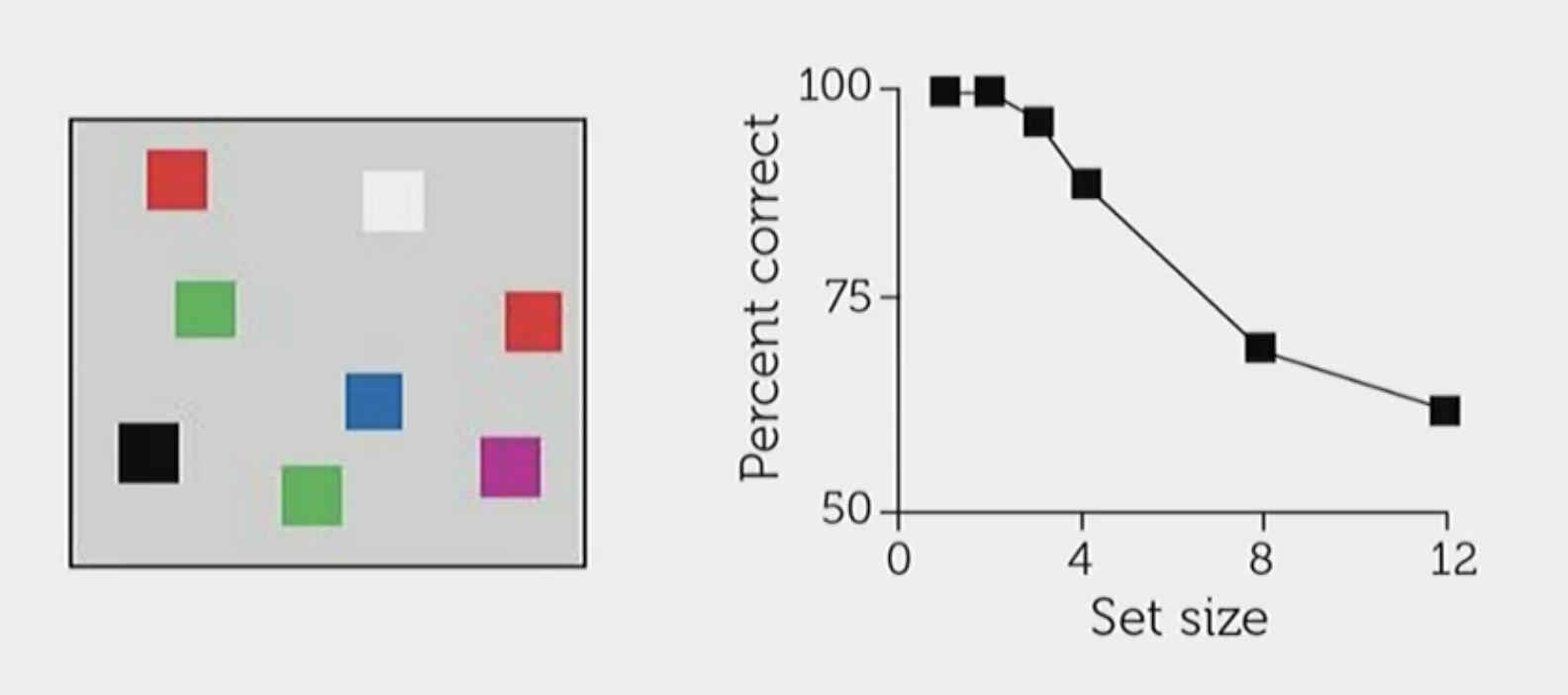
What did Luck and Vogel conclude?
They said that the capacity for visual STM was 4±1.
Why is the visual capacity for STM 4±1?
Because our attention only has a capacity of 4 items. So when we are attending to something, we can only pull 4 items from iconic memory (visual memory) and transfer it into STM.
Why did Luck and Vogel use a change detection paradigm?
Because you don’t want any information in a verbal code, otherwise it might elicit verbal STM instead of visual STM.
What is the alternative model for short-term memory?
Working Memory (Baddeley).
Baddeley proposed this new model for STM where it was now not a single store but made of 3 distinct sub-units:
visuo-spatial sketchpad
central executive
phonological loop
Working memory (WM) allows us to temporarily store and manipulate information
It also has a limited capacity system (like attention)
It is not determined by just one factor
Working memory is actively manipulating material (unlike STM which is the passive storage for memory)
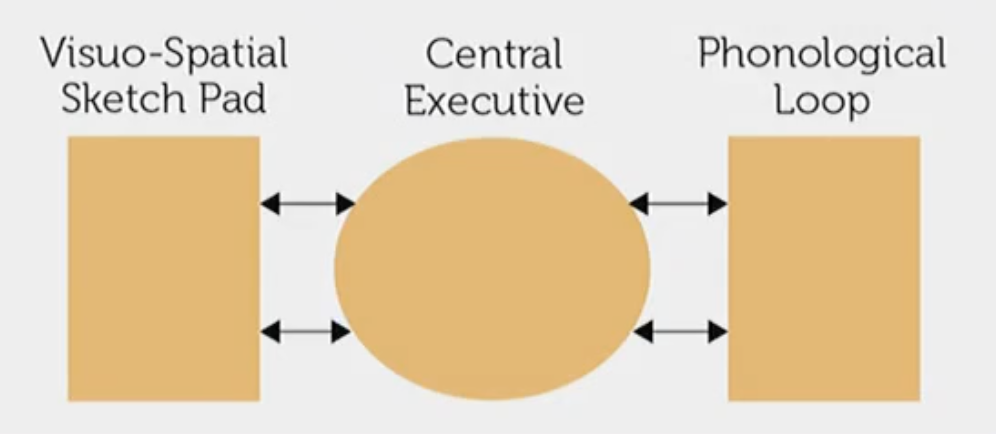
Why did Baddeley propose this model?
He felt that there was no relationship between digit span, STM and LTM. Therefore, he felt that STM storage was not a sufficient explanation, leading to make working memory.
What is the visuo-spatial sketchpad?
It is the visual component of WM that allows you to analyse and manipulate visual information.
What is the phonological loop?
It is the auditory component of WM that allows you to repeat auditory info so that you can use it/analyse it.
What is the central executive?
The part that determines what information makes it into working memory and what doesn’t. It is also the bridge between the visuo-spatial sketchpad and phonological loop.
Does each component of working memory have its own resources?
Yes.
Which components of WM are able to store things?
The visuo-spatial sketchpad and phonological loop can store things, NOT the central executive though.
What are the 2 components of the phonological loop?
Phonological store
Articulatory rehearsal process
Define phonological store.
The passive STM store (aka. the slots) that hold information.
Define articulatory rehearsal process.
It is a rehearsal buffer that allows us to rehearse the information in the store to keep it active in our memory. It also converts incoming information into a verbal code.
Why is the articulatory rehearsal process useful?
Let’s say you see something, the articulatory rehearsal process converts the incoming information into a verbal code so that we can store an auditory version of the stimulus in our phonological loop (memory).
Define articulatory supression.
A task Baddeley created to test his ideas about the articulatory rehearsal process.
What was the task Baddeley had people do for articulatory supression?
He got the participants to repeat a simple verbal utterance during encoding.
ie. they were told to repeat “la la la la la la” while they’re watching something, or listening to something else—during encoding.
What did articulatory suppression show?
Since people were visually watching something, their articulatory rehearsal process was busy (due to its limited capacity being taken up by saying la la la la la—some short verbal utterance).
Therefore, their articulatory rehearsal process was not able to convert what they were watching into a verbal code and was unable to be stored in the phonological loop.
So the only way to remember the visual information is to put into the visuo-spatial sketchpad.
Why is it bad that we can only store things in the visuo-spatial sketchpad during articulatory suppression?
We usually store memories in both the phonological loop (by saying the thing out loud) and visuo-spatial sketchpad (by seeing it).
So when we can’t store the information in both audio and verbal versions like usual, our recall is disrupted (we don’t remember stuff as well).
What are the behavioural consequences of articulatory suppression that supports Baddeley’s ideas?
disrupts recall
reduces (or eliminates) the phonological similarity effect and word length effect
Why does articulatory suppression reduce/eliminate the phonological similarity effect and word length effect?
Because they both rely on verbal coding and so if there’s no verbal coding happening, then those effects cannot happen.
How do the behavioural consequences mentioned earlier support Baddeley’s ideas about the articulatory rehearsal process?
since recall is disrupted, that suggests that the articulatory rehearsal process was not able to convert visual information into a verbal code, messing with our memory.
by reducing/eliminating the 2 effects contingent on verbal code, it shows that the articulatory rehearsal process was unable to convert visual information into a verbal code, thus getting rid of the effects.
What does the central executive do?
This is where processing in WM happens. It is often referred to as a attentional control mechanism since it helps inhibit distractions.
It initiates retrieval from STM and LTM. It had no storage itself but can be shared amongst components.
What does our susceptibility to our distractions have to do with working memory?
Those who are better able to ignore distractions can do so because they have a higher working memory.
What was wrong with Baddeley’s original WM?
It did not consider the binding problem.
What was Baddeley’s updated version of WM?
He included the episodic buffer; a passive store with a limited capacity. It stores bound information like episodic memories.

What are bound memories.
Episodic memories where visual, audio etc… components are bound together into one memory.
What was another model about WM?
Embedded Process Model (Cowan).
He proposed that there is only LTM and attention which makes up WM. So the speech bubble is LTM and the small circles inside are specific memories we have. Cowan says that WM is the activated portion of LTM.
LTM are not conscious, so in order for LTM memory to be conscious it needs to be activated with your attention spotlight.
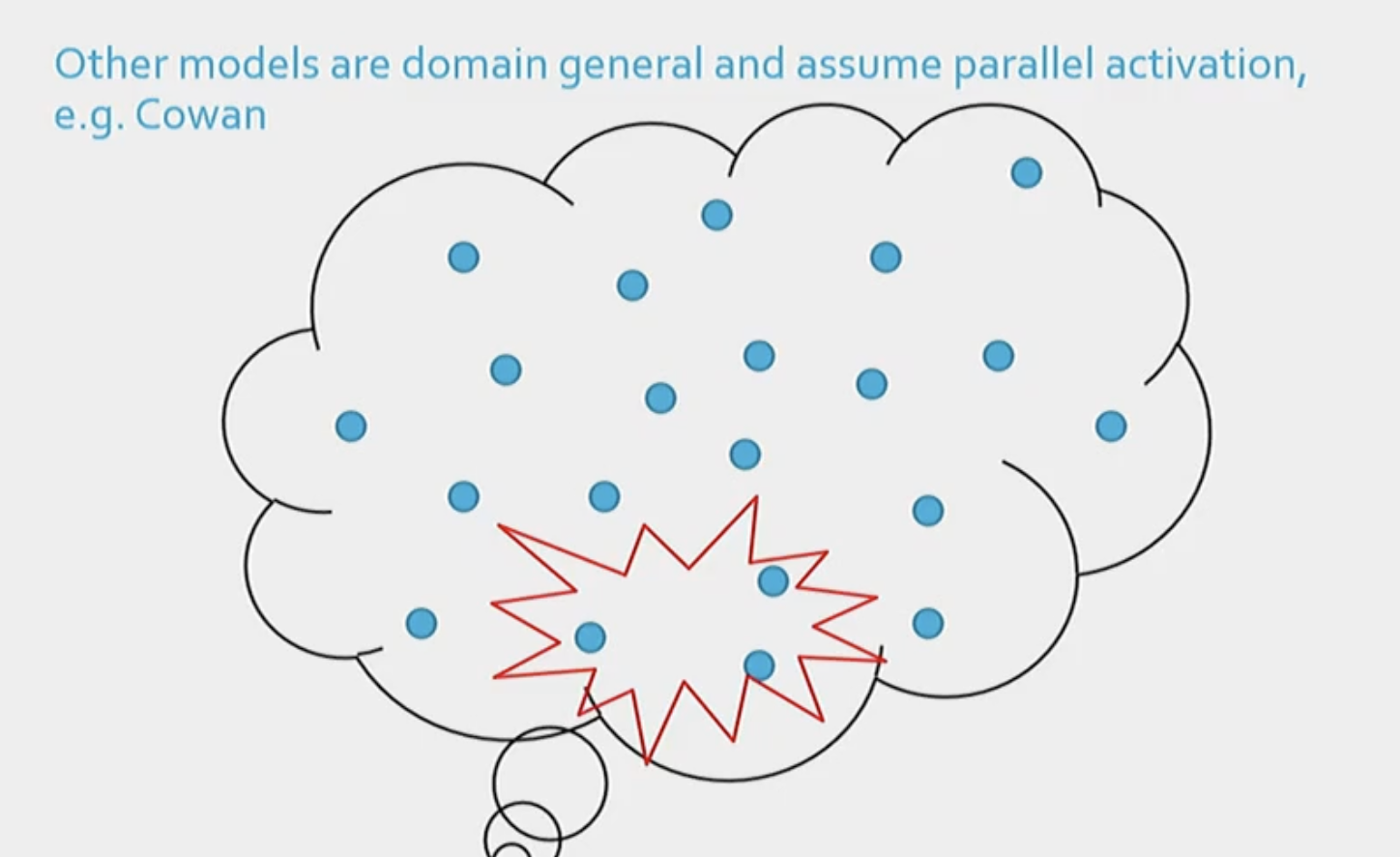
Why did Cowan say that the capacity for WM was 4 items?
Because attention has a limited capacity for 4 items.